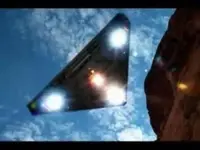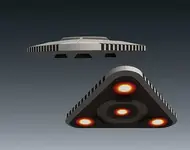wlb42
Hero Member
- Joined
- Dec 4, 2011
- Messages
- 559
- Reaction score
- 1,915
- Golden Thread
- 0
- Location
- Florida
- Detector(s) used
- Nokta Makro Simplex+, Whites TRX Pinpointer, Whites MX5, Bounty Hunter 3300 Discovery, Whites Coinmaster Pro, Whites Quantum 2, Whites 6000, Whites 6DB, Whites Beachcomber.
- Primary Interest:
- Metal Detecting
- #1
Thread Owner
Mars is rife with life! As reported by Mr. Corey Goode (CG), and his first-hand observation, while on Mars, reveals previously undisclosed details of the habitable zones on Mars and the various forms of life that can be found there. Barren stretches of land swath the surface of the red planet, as evidenced by the plethora of official photos released by NASA. But does it have to be completely lifeless? More than just evidence of ancient life, the first human settlers encountered many other forms of life; strange creatures well suited for the electro-magnetic disruptions which added unforeseen complications to the building-out of burgeoning colonies. This interview with/by David Wilcock (DW) was originally webcast November 17, 2015.
http://spherebeingalliance.com/blog/transcript-cosmic-disclosure-finding-life-on-mars.html
- DW - First of all, you mentioned before, in previous episodes something about vegetation on Mars. Could you just briefly give us an overview of what you saw. What did [you actually see], did you walk around on the surface, did you see any types of plant life?
- CG - Personally, what I saw were a kind of colonies of shrubs that were in an area where we were building an outpost. These were very hearty, short and almost cactus-like shrubs that were purple and red [and] had thick stocks that went into the ground. They had sharp pointy leaves, that were very sharp.
- DW - What part was purple and what part was red?
- CG - The stock was purple and red. The leaves were also purple and red. And there were thorns on these stocks and branches of the plant. They were not something you [would want to] stick your hand in, they were very prickly, I guess you could say.
- CG - Because of the atmospheric pressure - and it also depended on the season of where you were - the temperatures could change 40 or 50 degrees in a matter of hours. I don't remember exactly the temperatures that were on the surface of Mars. I just know, it's definitely warmer than the statistics on the internet are [claiming]. One of the things I wanted to mention were now, [in the] current era, the space programs are very careful about cross-contamination of germs, bacteria, that kind of thing going from one planetary sphere to another. Back in the 1930's, 40's and early 50's, [they were not as careful]. And especially the Germans, they were bringing crates and crates of supplies and instruments, all the different things they needed, to Mars. They brought some very annoying pests. They brought along cockroaches, rats, spiders and other earthly pests that have become a problem on Mars and have contaminated [it]. The rats have gotten a little bigger but survive just fine out on the surface. The cockroaches have become huge, like bigger than your hand huge.
- DW - Oh my gosh.
- CG - People joke around that cockroaches could survive a nuclear war, [well] surviving on the surface of Mars is not a problem for them.
- DW - Are there indigenous insects that the rats could eat? I mean what do you think their food supply was?
- CG - I don't know. I'm sure there are probably insects there because there were very large spiders. I just didn't read or experience any myself. This insectoid group, they use a biological kind of technology where they [can] create smaller bugs or insectoids to do certain tasks.
http://spherebeingalliance.com/blog/transcript-cosmic-disclosure-finding-life-on-mars.html
Last edited:






